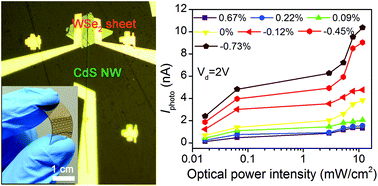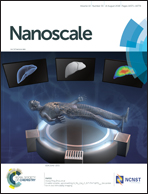Tunable WSe2–CdS mixed-dimensional van der Waals heterojunction with a piezo-phototronic effect for an enhanced flexible photodetector†
Abstract
Due to the absence of bond fracture and atomic reconstruction under strain, vdWs structures hold great promise in flexible electronic/optoelectronic applications. Besides all-2D heterojunctions, the dangling-bond-free surfaces of 2D materials also enable vdWs interaction with other materials of different dimensionalities, forming mixed-dimensional vdWs heterostructures. Such structures allow a much broader selection of materials and may provide a promising approach to compensate for the intrinsic weakness of 2D crystals before realizing their full potential. In this study, we present the fabrication of a WSe2–CdS mixed-dimensional vdWs p–n heterojunction for flexible photodetection. A strain-tunable vdWs interface was demonstrated and the photoresponse was dramatically enhanced with the piezo-phototronic effect. The photocurrent can be increased by ∼110% under a compressive strain of −0.73% and the corresponding photoresponsivity reaches up to 33.4 A W−1. The enhancement originates from realigned local energy-band tilting at the WSe2–CdS interface by strain-induced piezopolarization, which promotes the transport process of photoexcited carriers. Our work provides a new route to a tunable vdWs interface other than with electrostatic gating, which may inspire the development of novel flexible vdWs optoelectronics.

- This article is part of the themed collections: Materials and Nano Research in Atlanta and Editor’s Choice: van der Waals heterostructures


 Please wait while we load your content...
Please wait while we load your content...